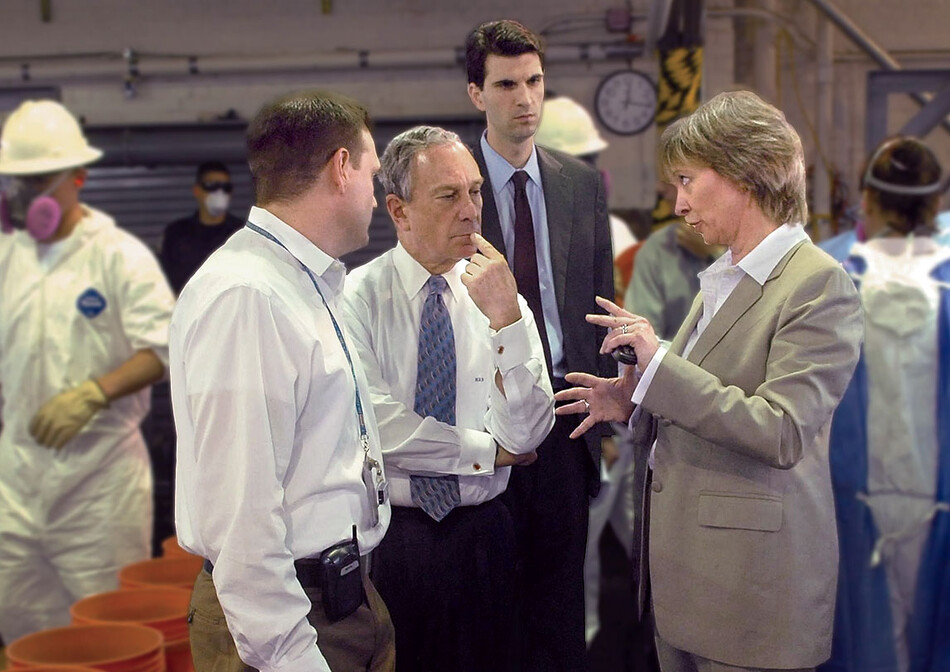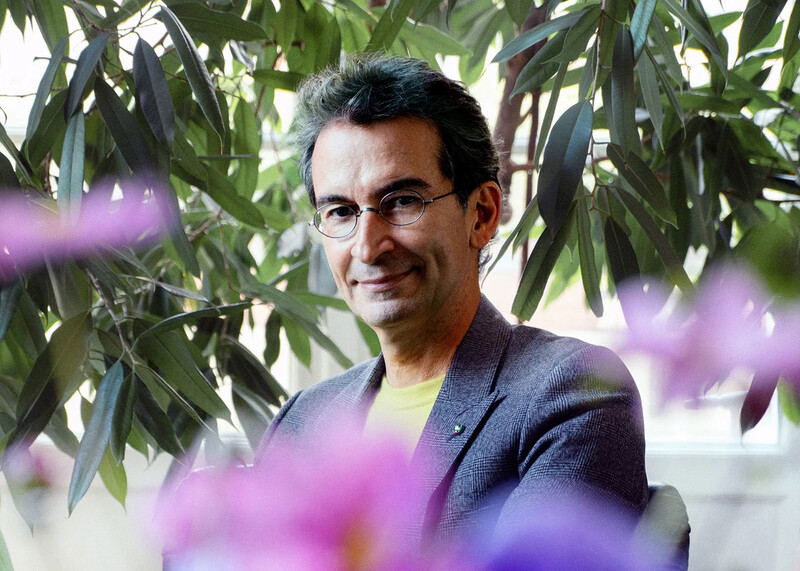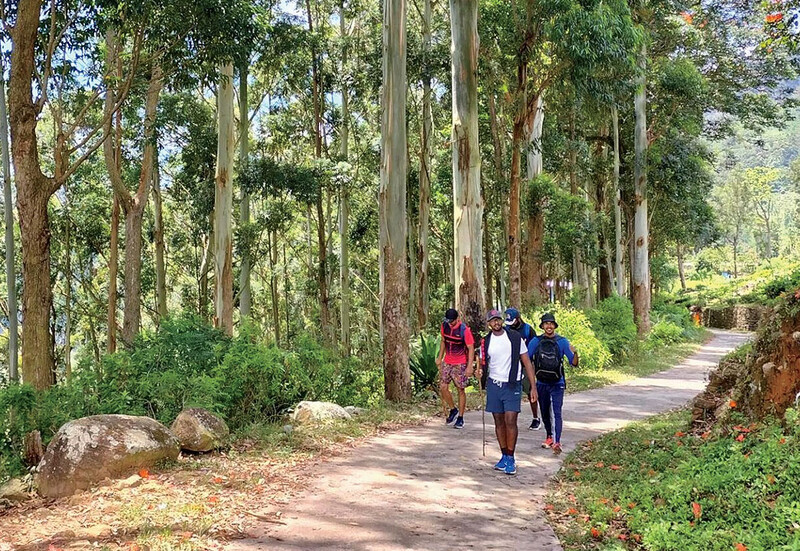“We all have one life — long, short, whatever it is,” says Barbara Butcher ’83PH, seated in a green vinyl booth in a busy Greenwich Village restaurant. “And if someone comes and takes that life away for no reason, it is so fundamentally unfair. It’s random, it’s senseless. There’s so much about a violent, sudden death that I can’t begin to comprehend.”
Butcher’s thoughts on death should be required listening. She knows its riddles well, having grappled with it thousands of times in the homes, streets, and tunnels of Manhattan. From 1992 to 2015 she worked on death investigations for the New York City Office of Chief Medical Examiner, where she probed the circumstances of some 5,500 deaths. Her job was to figure out how the deceased ended up that way — by homicide, suicide, or accident — and determine if the case warranted further inquiry. She has inspected the grisly results of stabbings, shootings, strangulations, leaps from buildings, and falls from the tops of subway cars (“When someone is killed while subway surfing, it takes a long time to pick the person up”). She’s knelt before the bodies of men, women, and children, trying to construct a narrative of the scene. Every dead body tells a tale, and each has left a mark on Butcher’s psyche.
“There was a case I did years ago,” she says. “A young woman is out with her dad for dinner. She comes home and she’s sitting in an overstuffed easy chair, smoking a cigarette and drinking beer. She’s a little high, and then she goes into her room to write at her computer. What she doesn’t realize is that her cigarette ember has fallen into the chair. The chair doesn’t burst into flame, it just smolders, and the smoke rises straight up to the ceiling and then crawls along the ceiling until it hits the back room and just comes down and suffocates her. She doesn’t smell it or feel it, because that’s how fire works: the carbon monoxide produced by a smoldering fire is colorless, odorless, and deadly. When I arrived, she was lying on the floor, covered in fine black soot. Here was an intelligent, successful, nice young woman, and it was so stupid. She had taken the battery out of her smoke alarm because it went off when she cooked. So she died.
“That’s what I mean when I talk about senselessness.”
Butcher is one of those rare people whose intellectual and verbal gifts fuse so completely with their work that they become prophets of their profession. Her 2023 memoir What the Dead Know revealed her as an avatar of New York noir, both as a writer and a character: smart, droll, wise, and hard-boiled, with a heart as big as a lion’s. More recently, she appeared in the 2024 Netflix docuseries Homicide: New York, in which she and other investigators broke down some of their most notorious murder cases.
But her main job in retirement has been learning to live with her own trauma, and by extension shining a light on the mental-health needs of her fellow death-scene responders. “If you are a cop, a fireman, a death investigator, a paramedic, you see some of the worst things in the whole world, things that tell you that life is evil and people are evil: murder, suicide, hideous accidents,” she says. “It becomes the norm, and you start to think that that’s how life is. Of course that’s not true, but when you see it all day, it’s a lot to overcome.”
Butcher knows this, and in writing her book, she wanted to edify others. “These jobs are so emotionally crippling and damaging that something has to be done,” she says. “Families need to know: how do you treat Dad when he comes home from a triple homicide and he’s quiet and sullen and angry and he doesn’t want to play with you? Everyone needs to understand the toll.”
Butcher works every day to manage the aftereffects of a career in public service, where she examined gored, bruised, shattered bodies, some of them decomposed (“the worst smell in the world, and you never forget it”), bodies that had belonged, she emphasizes, to real people. There was the Carnegie Deli massacre, in which five victims were shot, four execution-style, in an apartment above the famed New York City restaurant during a drug deal; the stabbing murder of Michael McMorrow, a real-estate agent whose mutilated body was found in the Central Park Lake (his killers were two baby-faced teenagers, Daphne Abdela and Christopher Vasquez); the rape, murder, and immolation of a nineteen-year-old computer-science student, Johalis Castro, in the stairway of her East Harlem apartment building, at the hands of serial killer Arohn Kee; and many more. Then there was the biggest crime scene of all — the seething mountain of rubble in Lower Manhattan after the terrorist attacks of September 11, 2001. Butcher’s department led the effort to recover remains.
“With 9/11, there were very few whole bodies, and so it was hard to identify with the victims,” Butcher says. “You’d find personal things, like a wedding ring with an inscription or a desk calendar with a golf ball in it, so strangely squashed, and papers everywhere — memos, doodles. That was hard, but I was fairly detached — that is, until the families came along. Once the families came in with their shattered hearts, with their overwhelming grief, with their raging anger, then it was a whole other ball game.”
In What the Dead Know, Butcher explains how she first became fascinated with forensics. As the oldest of nine children growing up in Massapequa Park, Long Island, Butcher was obsessed with dead animals. When neighborhood kids found a dead frog or cat, they brought the corpse to Butcher. Her parents had bought her a microscope and a chemistry set, and at age ten, Butcher was a little scientist. When kids presented roadkill to her for inspection, she would point out the tire marks, the bleeding lungs. The clues to what happened to the animal were there, visible, and Butcher loved finding them and piecing them together.
With her father, a New York City cop, at work at the 77th Precinct in Brooklyn and her mother busy at home with Butcher’s younger siblings, Butcher was something of a loner, bored and restless. Fortunately, there was a mobile-library van that came around the neighborhood, and that’s where Butcher found refuge. Books! She fell hard for reading. The van’s librarian, seeing Butcher’s interest, began choosing titles for her. “I think she saw something in me,” Butcher says. “She was very kind, and I just loved reading. It was a real education.”
Being a bookworm helped her develop an eye for detail and an ear for description and informed her humanistic approach to her work: “It’s important to see not just how people died but also how they lived,” she says. In her investigations, she would search death scenes for medications, personal notes, pictures, jewelry, and scan the shelves and the walls and the counters for clues to the lost lives. She applied the same scrutiny to the bodies: taking the temperature of each subject to estimate the time of death, noting the neck contusions caused by tightening fingers or the hilt mark in a stab wound that told her what sort of knife was used.
But more than anything, Butcher wanted justice for the victims and looked forward to testifying in court. She learned the ropes fast and savored the high-wire perils of cross-examination. And then, too, there were the visceral thrills of the job — that rush she got whenever she jumped into a car and sped off to a major case, with that galvanizing moral sense of being part of the justice system. Invariably dressed in a sharp business suit, she would display her badge and enter the cordoned-off theater of death, where she joined that exclusive, close-knit society of cops, firefighters, paramedics, detectives, and people like herself, the “last responders,” who come to take samples and measurements before the bodies are removed.
The prevailing attitude in this male-dominated world was one of dispassion and off-color jokes meant to deflect the horror, and Butcher, who was just the second female death investigator in Manhattan, kept up her own facade of toughness. As the daughter of a cop, she knew the style, could take barbs and dish them with equal aplomb, and earned passage into the fraternity. But for the most part, she was alone with her feelings, and that’s when the demons called.
Butcher’s demon was the bottle. After getting her master’s in public health from Columbia, she had a string of demanding jobs — hospital administrator, physician’s assistant in surgery, health-care provider in a prison. She was prone to depression, and drinking helped temper the stress. But soon it got out of control. One night, in the grips of despair, she put a gun to her head and was saved only because she’d drunk so much that she passed out. After hitting rock bottom, she decided to go to a program to get sober. “I did everything I was supposed to do, and the compulsion to drink was lifted. I felt great peace. I felt freedom. Falling apart just means that you can put yourself back together.”
A career counselor at her program suggested that Butcher, based on her background and interests, look into becoming a veterinarian or a coroner. Butcher was intrigued. She cold-called New York City’s chief medical examiner, Charles Hirsch, to request an informational interview. Hirsch granted a meeting and was so impressed that he hired Butcher on the spot. “Dr. Hirsch was my mentor, friend, and father, a very humble man and a great gentleman,” Butcher says. But neither Hirsch nor anyone else could shield her from the temptation of alcohol.
“There were times when I saw things so awful that I tried desperately to unsee them,” Butcher recalls, her blue eyes awash in feeling. “One night I came home, stripped off my clothes, got into bed, pulled the sheet over my head, and just shook and cried and thought, ‘Please, God, please take this vision out of my head. I can’t bear it.’ I wanted to go outside myself in some way, and drinking would be an easy way to do it, wouldn’t it?”
Yet Butcher, time and again, found the strength to resist. Others did not. This was especially evident after 9/11. Butcher’s descriptions of the remains found in the ruins of Ground Zero (or, as the responders mordantly called it, the Pile) — a jawbone inside a rib cage, bodies “compressed into unrecognizable matter” — only hint at the hell that the responders faced. “There was so much dysfunction, because people were in so much pain,” Butcher says. “They were drinking, drugging, gambling, having affairs. They needed relief.”
Concerned, Butcher went to Hirsch and said, “Chief, people are drinking too much and carrying on. They need help.” Hirsch disagreed. “Barbara,” he said, “we are very strong people. We do this job because we can.” It was one of the few times Butcher had ever known her boss to be wrong.
“Then I remembered that rage and anger are so much easier than grief. I told myself: just feel the grief.”
And yet what helped people get through the ordeal, says Butcher, was the potent sense of mission that Hirsch instilled in everyone. “Dr. Hirsch said we will do whatever it takes for as long as it takes, until we identify every single victim.” It was an impossible goal — many victims were pulverized without a trace — but it set the tone.
Still, Butcher was haunted, and after the site was cleared and rebuilt with a giant tower and a vast memorial fountain and museum, she avoided the area. Even to look at the sky from that vantage was too much. But her therapist kept encouraging her to go down there, and eventually she did.
“I walked around the memorial where all the victims’ names are etched in bronze,” Butcher says. “I sobbed and sobbed. I sobbed hysterically. Then the tourists started looking at me. I didn’t care. I just let go, for the first time in years.”
At one point, she noticed tourists putting drinks and ice-cream cups on the memorial, violating what for Butcher was sacred space. “I was so furious that I started to go up to someone. Then I remembered that rage and anger are so much easier than grief. I told myself: just feel the grief. Let the tourists alone.”
Such flashes of insight feed her both as a writer and as a voice for responders and victims alike. Butcher never tires of communicating her experiences, and the more she talks, the more she learns. Another breakthrough came while she was filming Homicide: New York. The episode was on the Carnegie Deli massacre. “Oh, that was awful,” says Butcher. “The victims had been tied up face down in a line and shot in the head one by one. I saw the pools of blood. I smelled the iron.” More than twenty years later, Butcher was in a television studio talking about it. One of the victims, Anthony Veader, a hairdresser, was also there. He had survived the shooting.
“Anthony was shot in the back of the head, but by some accident of physics, the bullet curved in his skull and it didn’t kill him,” Butcher says. “So I went over and introduced myself, and I said, ‘I was there at the scene. I feel strangely close to you.’ And he said, ‘I understand that. I feel a sense of having been saved.’ And I said, ‘I didn’t save you,’ and then we just both started crying and hugging each other. That was powerful for me. It was a reminder that not everybody dies. Sometimes people live.”
Sometimes people live.
In the years since she worked as a death investigator, Butcher has slowly begun to master the art of living. “I decided I wanted more creativity, more connection, more life,” she says. She has taken acting classes and piano lessons, and she’s writing a novel based on one of her unsolved cases. “I refuse to be shut down anymore. I want to feel things. I cry all the time. There’s plenty to cry about. So I’m going to live and learn and understand everything I can, and I’m going to feel it.”
One thing she’ll never understand, of course, is the senselessness of violent death. It will always be a mystery to her. And that only makes her more grateful for every moment she’s alive.
“I operate on a principle of gratitude,” she says. “So yeah, I pray. I wake up each day and just look out the window and say, ‘Thank you.’ And the gifts just keep on coming.”



